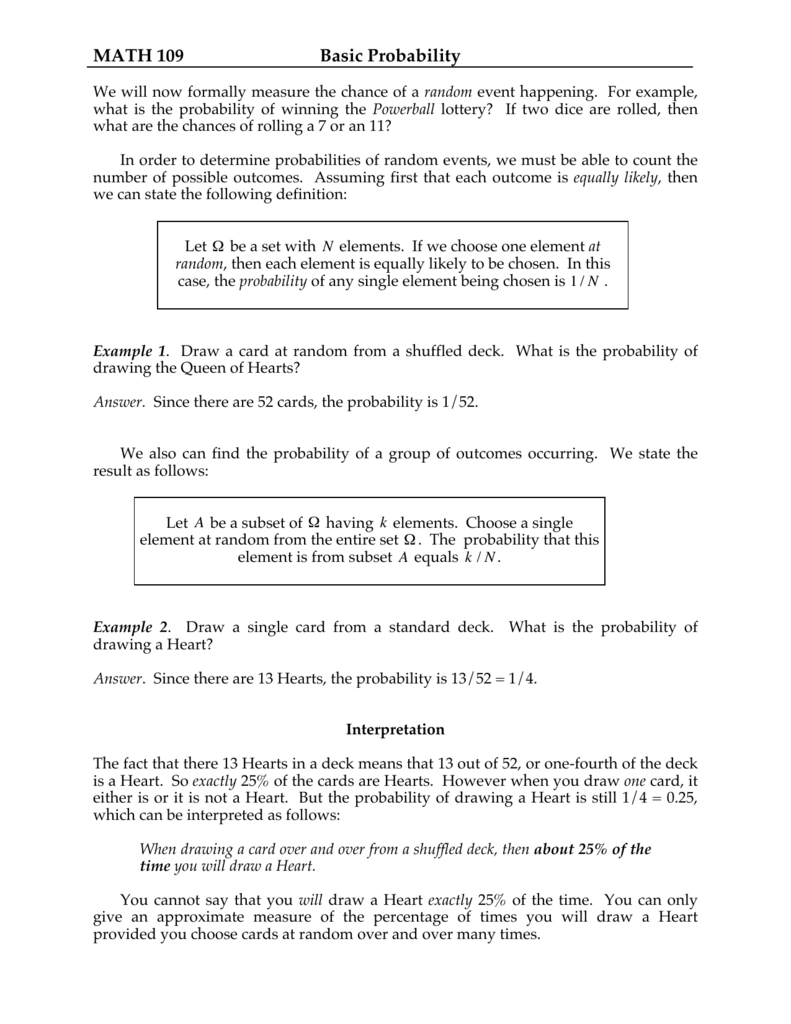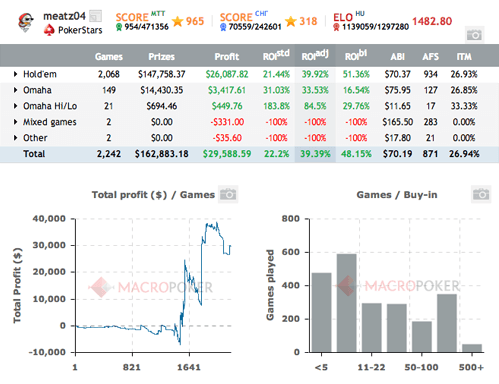Basic Poker Statistics
- Basic Poker Statistics Cheat
- Basic Poker Statistics Games
- Basic Poker Statistics Definition
- Basic Poker Statistics For Dummies
Probability and Poker In the standard game of poker, each player gets 5 cards and places a bet, hoping his cards are 'better' than the other players' hands. The game is played with a pack containing 52 cards in 4 suits, consisting of. Each poker deck has fifty-two cards, each designated by one of four suits (clubs, diamonds, hearts and spades) and one of thirteen ranks (the numbers two through ten, Jack, Queen, King, and Ace). Therefore, the odds of getting any Ace as your first card are 1 in 13 (7.7%), while the odds of getting any spade as your first card are 1 in 4 (25%). This means that Basic Poker Statistics if you got $10 of free credit, you’ll have to play for example 1000 spins at $1 each to roll it over. Note that not all games are allowed to be played with the bonus credit, and not all games contribute at the same rate to roll over requirements.
Introduction to the Mathematics of Poker

Pot Odds
Let’s first take an example:
This is how you calculate:
(1/100)*100=1% breakeven frequency.
- 1/3 Pot – 20%
- 1/2 Pot – 25%
- 2/3 Pot – 28%
- 3/4 Pot – 30%
- 4/5 Pot – 31%
- Full Pot – 33%
- 1.5x Pot – 37%
- 2x Pot – 40%

Fold equity
- 1/3 Pot = 25%
- 1/2 Pot = 33%
- 2/3 Pot = 40%
- 3/4 Pot = 42%
- 4/5 Pot = 44%
- 1.5x Pot = 60%
- 2x Pot = 66%
- 3x Pot = 75%.
Pre-flop actions
- A pair – 29%
- Two Pairs – 2%
- A Set (when holding a pocket pair) – 12%
- Trips – 1.35%
- A Full house – 0.09%
- Four of a Kind – 0.01%
- A pair or better - 32%
- A flush holding 2 suited cards – 0.84%
- A flush draw holding 2 suited cards – 11%
- A straight with suited non-gapped connectors – 1.31%
- An open-ended straight draw with non-gapped – 10.5%
- A straight with one-gapers – 0.98%
- An OESD with one-gapers – 8.08%
- A straight with two-gapers – 0.65%
- An OESD with two-gapers – 5.2%
- A gutshot (suited connectors) – 16.6%
- Any unsuited hand flopping 2p+ - 3.45%
- Any suited hand flopping 2p+/flush – 4.29%
- Suited connectors flopping 2p+/straight/flush – 5.59%
Which poker stats are most important?
Our poker HUD software offers a large amount of statistics. Knowing which ones are relevant and important can be overwhelming. If you are new to poker software you can initially ignore all statistics except the essential three poker statistics. Once you have understood how to use the basic statistics, you can add more depending on your style of play, and your chosen table size.
The big three poker statistics (and one bonus stat):
- Voluntarily Put $ in Pot (VPIP)
- Preflop Raise (PFR)
- Postflop Aggression Frequency (Agg)
- A bonus stat: Big blinds won/100 hands.
These three statistics are a great starting point to get an idea of a person’s playing style. They only require 25 hands or so to reliably give a good idea of a player's tendencies.
Voluntarily Put $ in Pot (VPIP)
VPIP in poker measures how often you voluntarily pay money into a hand before seeing the flop. Paying the big blind, the small blind, or the ante is not considered voluntary. Therefore this percentage indicates how often you called, bet, or raised. The lower this value, the tighter your hand selection is. The higher, the looser. Only preflop betting is taken into account.
Good players know to only invest money in the pot when they have decent starting hands. A simple way to measure whether you are doing this is to keep your VPIP at a sensible value.
What is a good number for VPIP?
Simple answer: between 15% and 20%. This assumes you want to play tightly, you are playing micro-stakes, and you are playing on full ring cash tables.
Now the more complicated answer: it depends a lot. If you are still learning to play good poker, then you should be very selective in which hands you play, so your VPIP might acceptably be a tad lower than 15%. The less people on the table, the more hands you can play. If you are on a table full of ultralight players, you can also loosen up. An experienced player who understands the subtleties of the game can get away with a VPIP between 20% and 27%. In 6-max or heads-up, most players have a much higher VPIP. In Pot Limit Omaha, VPIP values will be even higher.
Preflop Raise (PFR)
The PFR statistic indicates how often you have raised before the flop is seen. A high value is an indicator of an aggressive player. A low value indicates a passive player. Good players are aggressive players.
Your PFR has a possible range between a minumum of 0% and a maximum equal to the value of your VPIP. That is, if your VPIP is 20%, then your PFR can’t be higher than 20%. Ideally it should be a little lower than your VPIP, but not much lower.
Poor players and beginners play timidly. They call too often preflop. Good players frequently fold or raise preflop, especially if no other players have yet raised. If you are not prepared to raise, then you should consider folding. Calling preflop just in case the flop is good for you is not a winning poker strategy.
What is a good PFR range?
Between 2% and 3% lower than VPIP. If your VPIP is 15%, PFR should be about 12%. These two numbers in combination indicate that you are only playing quality hole cards, and you are predominantly raising with them pre-flop. In other words, you are playing how most poker books and poker forums say you should play.
Postflop Aggression Frequency (Agg)
Agg indicates how aggressively you play postflop. The higher this number, the more aggressively you are playing. This must be interpreted in combination with VPIP. Players who see very few flops will naturally tend to have a higher aggression percentage because they are only playing top-quality hole cards.
Poor players play passively postflop. They’ll check or call too often. Good players know to play good hands aggressively postflop:
- because players with speculative hands are forced to fold before they get free cards
- because if they hit the flop or have a dominating hand, a bet or raise will increase their return
What is a good Agg range?
50% to 60% is ideal, assuming that you have a VPIP of 15% to 20%. Much higher, and you are probably overplaying speculative hands and bad hands, and bluffing too much. Much lower and you are not playing your good hands strongly postflop.
Leave the bluffing for the movies and for live play. At low stakes online play, bluffing is much less important than a good understanding of the probabilities of winning hands.
Big blinds won/100 hands
The three stats I've presented so far mean nothing if you can't keep your win rate positive. A nice way to 'normalize' your win rate across different stake levels, table sizes, and opponents is to measure how much you won in terms of the big blind. If you are playing at a table where the big blind is $0.50, and you won $20, then think of this as winning 40 big blinds.

If this number is not positive, then you are losing money. The best remedy is to drop to a lower stake level, where the opponents are weaker. If, according to this stat, you consistently win over time, then you should consider going up to a higher stake level.
Adjusting your play based on the villain's poker stats
This is where our poker HUD software gets really useful: analyzing and exploiting opponent weaknesses. Let's consider some hypothetical players:
Tight Tim has VPIP of 5%, PFR of 5%, and Agg of 100%
Basic Poker Statistics Cheat
With such a low VPIP, we can guess that this player folds anything except the very best hands. And with a PFR equal to VPIP, when he gets premium hands, he raises. So if this player raises, and you are next to act, you know that you should fold every hand except the best few hands, such as AA, KK, QQ. You can be almost certain that if you go to the flop, he'll raise postflop. So play tighter than usual with this player. But when you do get a premium hand, and he comes along, you can be sure that player B will put plenty of chips into the pot. Your pot, hopefully.
Basic Poker Statistics Games
Passive Pete has VPIP of 20%, PFR of 16%, and Agg of 10%.
This player seems take have a good handle on preflop play. But when he gets to the flop, he gets timid. He is probably going to give you a chance postflop to see the turn and river for free. If you go to the flop with him and raise, there is a good chance he'll fold. So you can play a bit more aggressively both preflop and postflop.
Eddie the Eagle has VPIP of 22%, PFR of 19%, and Agg of 55%.
Eddie has a good all-round balance between preflop and postflop play. Preflop, he plays tight and aggressively. Postflop, he balances between pushing hard with his good hands, and being willing to fold or check with his weaker hands. Eddie would be well-served to move on to understanding more advanced poker statistics.
Tracking your poker stats
Poker players use poker software like Poker Copilot to automatically record their hands. Each hand is broken down into many statistics, which are then aggregated into simple percentages.
Basic Poker Statistics Definition
Poker Statistics Guide
Basic Poker Statistics For Dummies
What’s next after you’ve understood the basic poker stats? Read our Poker Statistics Guide for a comprehensive explanation of understanding and using all the main poker statistics.